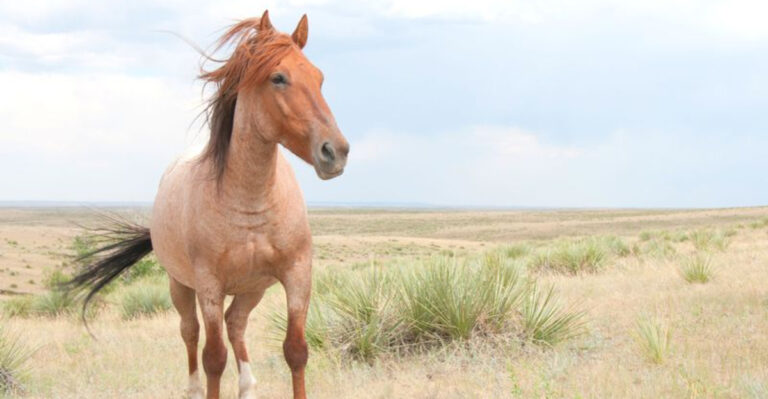6 Things To Teach Your Trail Horse (And 4 Trail-Training Exercises)
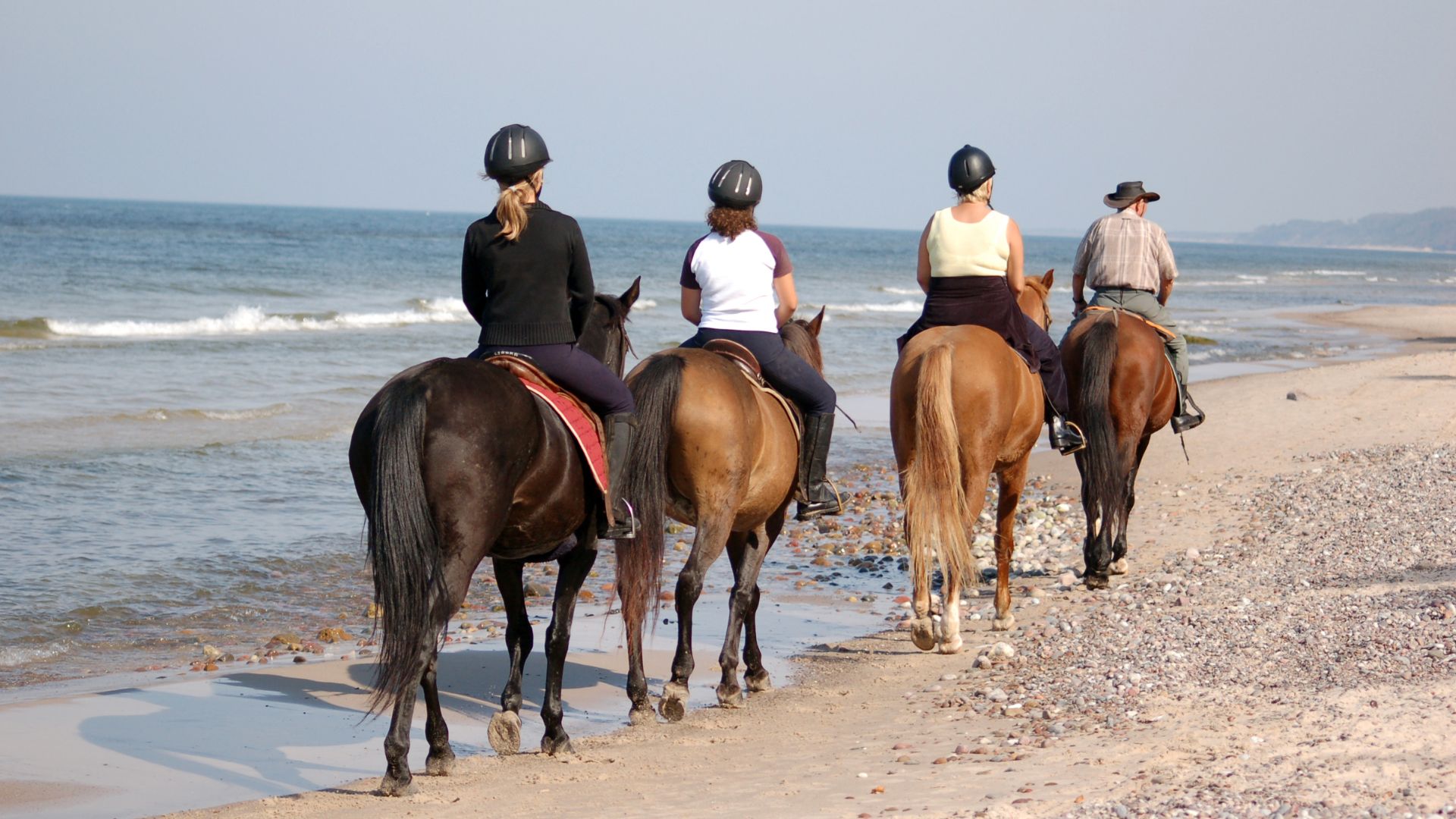
Teaching your horse essential skills for trail riding not only ensures safety but also enhances the overall experience for both rider and animal. Whether you’re traversing tranquil wooded paths or challenging mountainous terrain, having a well-trained trail horse can make all the difference.
This guide explores vital lessons to impart to your horse, ensuring an enjoyable and secure adventure on the trails. Each section is crafted to offer specific insights and actionable tips for horse enthusiasts.
1. Trust And Bonding
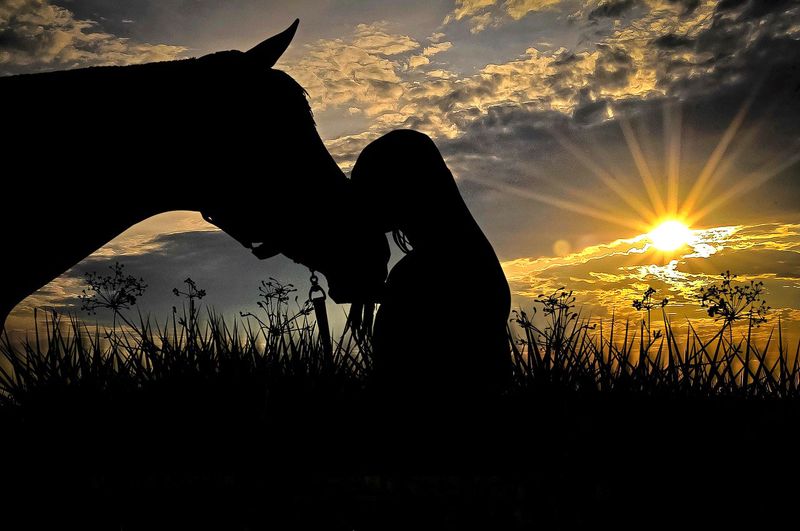
Building a strong bond with your trail horse is fundamental. Start by spending quality time with your horse outside of regular riding sessions. Engage in activities like grooming or simply leading them around, reinforcing trust.
Establishing a routine helps your horse understand its environment, which is key in building confidence. Consistent interaction fosters a sense of security, encouraging your horse to rely on you during unpredictable trail situations.
While riding, focus on maintaining calm and collected body language. Your horse picks up on your cues, so demonstrating confidence reassures them. In time, this mutual trust becomes the foundation for smooth and enjoyable trail riding.
2. Navigating Obstacles
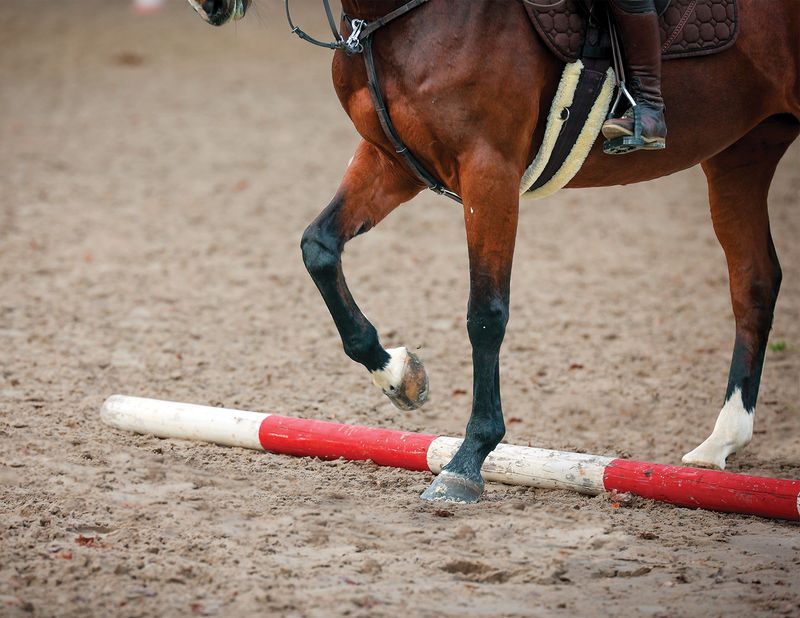
Introducing your horse to different obstacles is essential in trail training. Begin with simple challenges like walking over poles or shallow water. Gradually increase complexity as your horse gains confidence.
Experience in navigating obstacles teaches your horse to think independently and stay calm in diverse scenarios. This skill is invaluable when unexpected hurdles appear on a trail.
Ensure patience and positive reinforcement throughout the training process. Reward your horse for successfully navigating obstacles, reinforcing their confidence and willingness to tackle new challenges.
3. Desensitization To Sounds
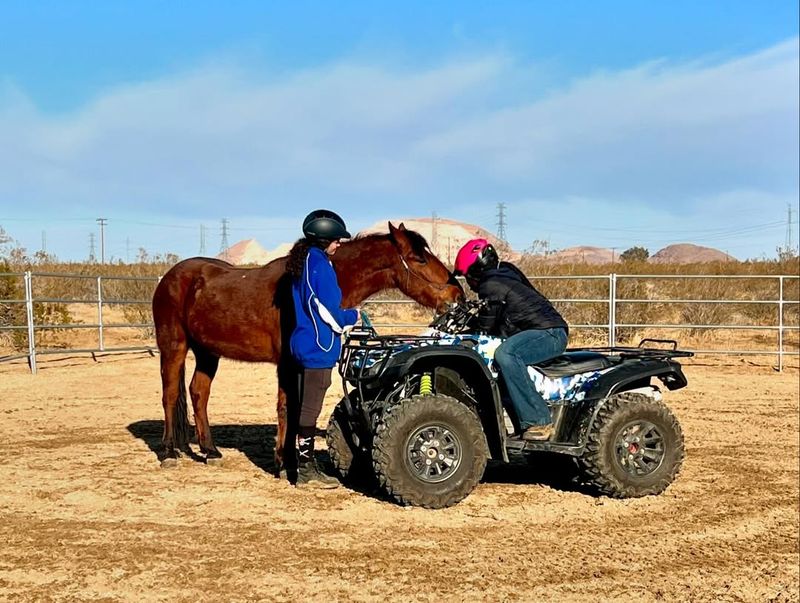
Trail riding exposes horses to many unpredictable sounds. From rustling leaves to distant machinery, desensitization is crucial. Begin by introducing soft noises in a controlled environment.
Gradually increase the volume and variety of sounds, such as clapping or playing recorded noises. The aim is to accustom your horse to stay calm and composed amidst auditory distractions.
This training not only enhances your horse’s confidence but also ensures their focus remains on you, rather than being startled by new sounds. Patience and consistency are key in developing this skill.
4. Trail Etiquette
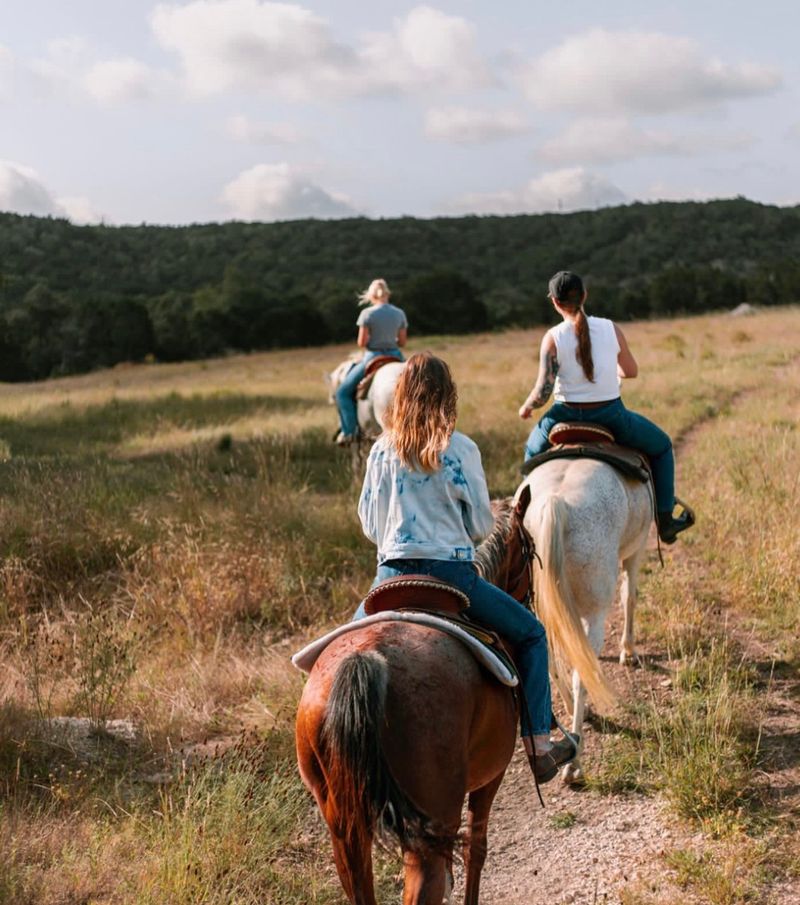
Understanding trail etiquette is vital for both horse and rider. Teach your horse to stay calm and collected around other animals and people. Practice yielding to other riders and maintaining a respectful distance.
Good trail manners prevent accidents and ensure a pleasant experience for everyone. Instruct your horse to stand quietly when others pass, fostering a peaceful trail environment.
Regular exposure to groups and varied trail conditions helps reinforce these behaviors. Encourage your horse with positive reinforcement, building their confidence and social skills.
5. Finding Safe Footing
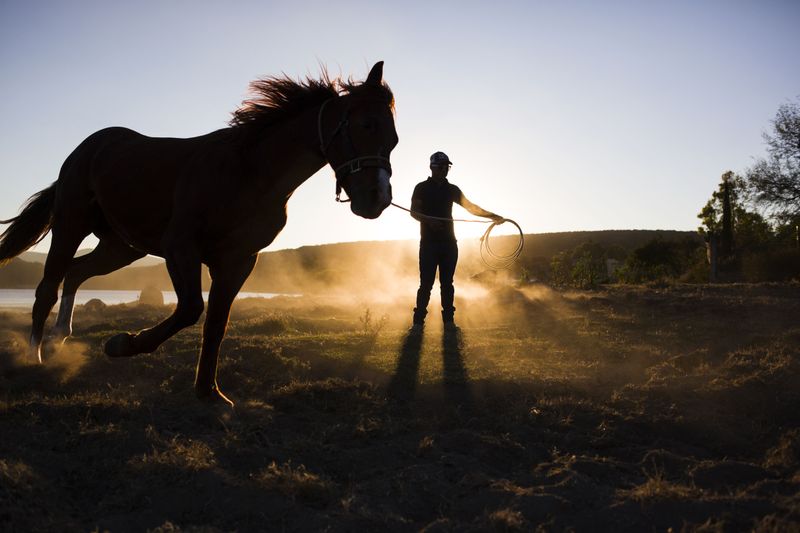
A keen sense of footing is indispensable for trail horses. Teaching your horse to assess and navigate different terrains prevents accidents. Start with familiar trails, gradually introducing more challenging surfaces.
Encourage your horse to take cautious steps over rocks, mud, and uneven ground. This practice builds their balance and agility, crucial for safe trail riding.
Consistent training enhances your horse’s ability to choose the safest paths. Always support them with guidance and encouragement, reinforcing their natural instincts and decision-making skills.
6. Calmness And Patience
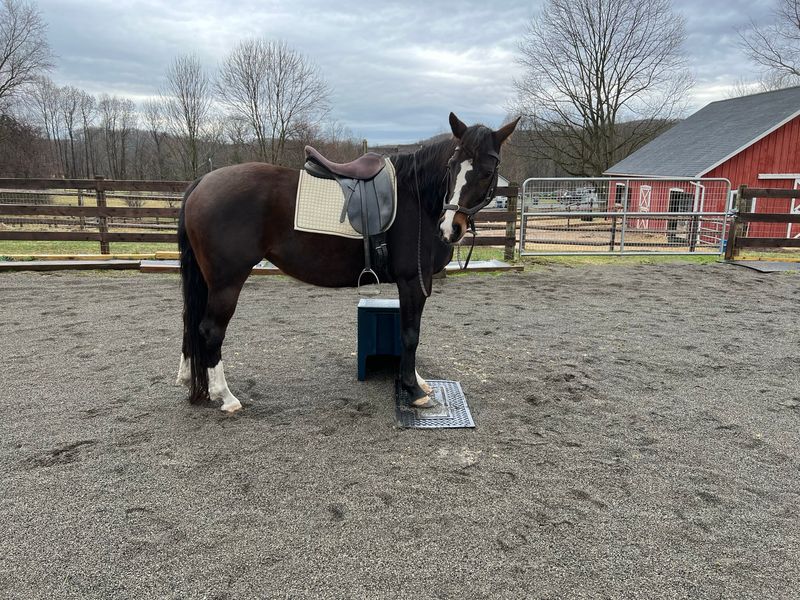
Teaching calmness and patience is essential for any trail horse. Regularly practice standing still and relaxed for extended periods.
Expose your horse to bustling environments, such as parks or events, to build their patience. This exposure helps them remain composed in dynamic settings.
Incorporate exercises that test their patience, like waiting before moving off after mounting. These practices enhance their self-control, ensuring a pleasant trail experience.
7. Controlled Riding In Groups
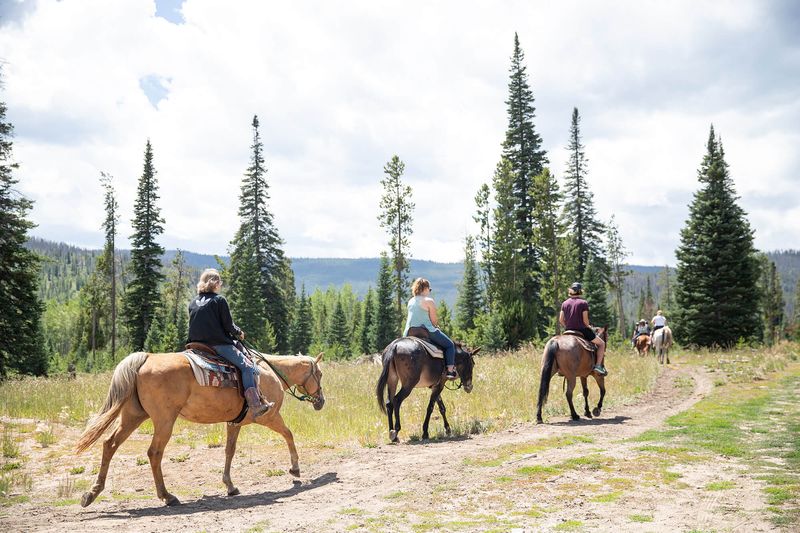
When riding in a group, maintaining control is paramount. Horses must learn to keep a safe distance from each other, preventing any jostling or racing. Begin by riding in pairs, gradually increasing the number of horses in the group.
Practice stopping, starting, and changing positions within the group. Encourage your horse to remain calm and focused, even when other horses may become excited.
This exercise helps develop discipline and the ability to concentrate amidst distractions. It’s a great way for both horse and rider to bond and build trust.
8. Water Crossing
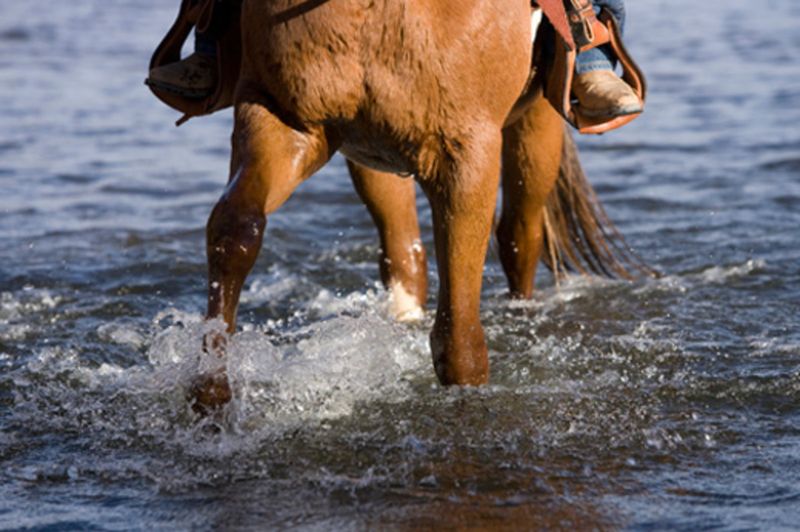
Water crossing can be intimidating, but it’s an invaluable skill for trail-trained horses. Begin with shallow water or puddles to acclimate your horse to the sensation of water underfoot. Progress to deeper streams or rivers as confidence builds.
Ensure your horse is calm and composed, providing gentle encouragement to overcome hesitation. Patience is vital; never rush the process or force the horse into the water. Maintain a relaxed posture and use verbal cues to guide them forward.
This exercise improves the horse’s bravery and adaptability on the trail. Over time, water crossing boosts their overall confidence, making them more resilient to unexpected challenges.
9. Steep Hill Climbs
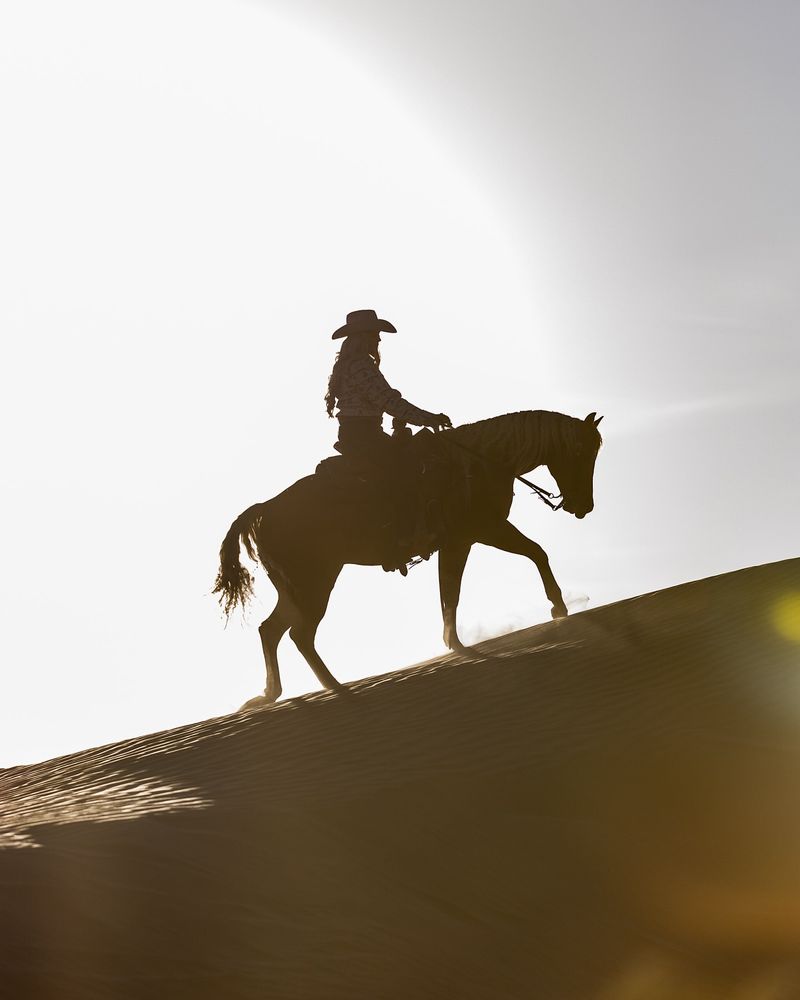
Training on steep hills enhances a horse’s strength and agility. Begin with gentle slopes and increase steepness gradually, allowing your horse to adjust physically and mentally. Monitor their breathing and pace to prevent overexertion.
This activity strengthens the horse’s hindquarters and improves balance, essential for navigating challenging terrain. Encourage them with calm verbal reassurances and maintain a steady, controlled pace.
Hill climbs also foster trust between horse and rider, reinforcing the horse’s ability to follow cues even in strenuous situations. This exercise is pivotal for preparing horses for diverse trail environments.
10. Desensitization To Wildlife
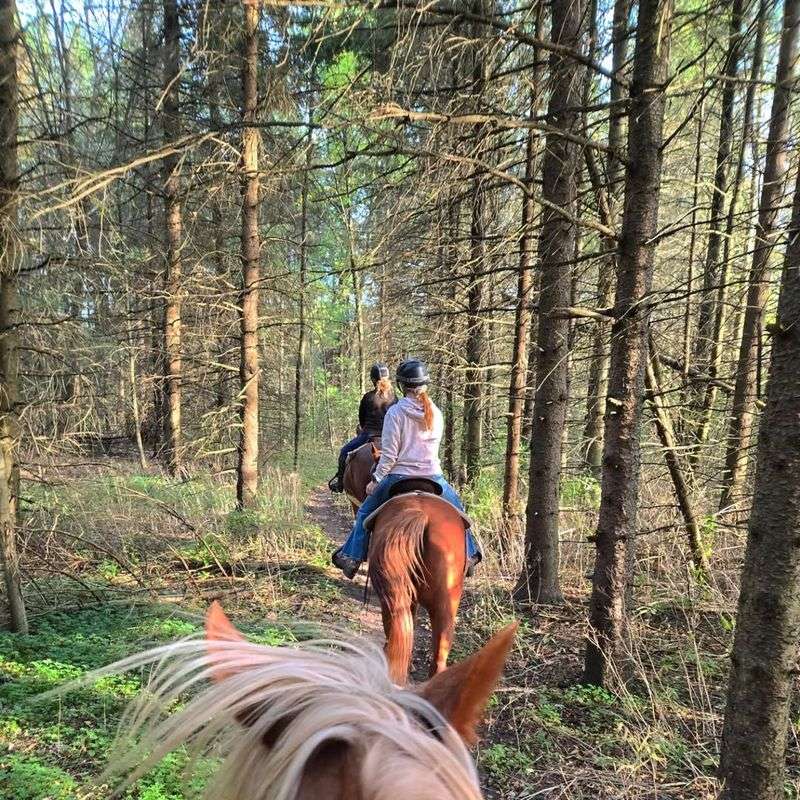
Desensitizing horses to wildlife is essential for safe trail rides. Introduce your horse to various animals gradually, initially from a distance. Observe their reactions and provide gentle assurance to reduce fear. Progress to closer encounters, ensuring your horse remains calm and attentive to your commands.
This exercise teaches horses to focus on the rider despite external distractions. Regular exposure to wildlife reduces flight responses and enhances the horse’s composure on trails. This skill is crucial for maintaining safety, minimizing risks of sudden movements that could unseat the rider or lead to accidents.


